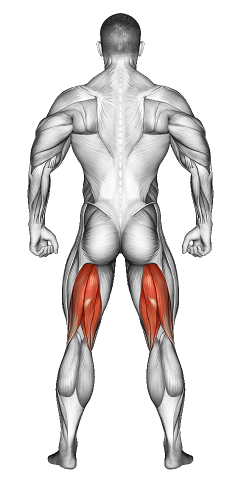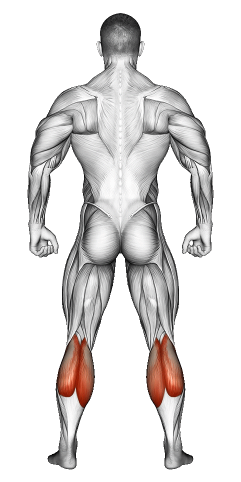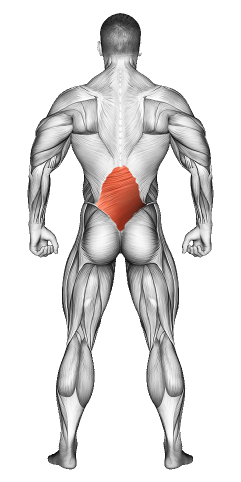Seated Hamstring Stretch: Video Tutorial & Stretch Guide

Written By: Claude Michael
Updated: Dec 18, 2024
| Workout | Seated Hamstring Stretch |
| Primary Muscle Group | Hamstrings |
| Secondary Muscle Group | Calves, Lower Back |
| Equipment Required | Mat or sturdy surface to sit on |
| Force Type | Static Stretch |
| Mechanics | Isolation |
| Exercise Type | Flexibility and Mobility |
| Difficulty | Beginner |
Seated Hamstring Stretch: Video Tutorial & Stretch Guide
- 1.Seated Hamstring Stretch: Muscle Groups
- -1.1Primary Muscle Group
- -1.2Secondary Muscle Group
- 2.Seated Hamstring Stretch: Step-by-Step Guide
- 3.Seated Hamstring Stretch: Overview
- 4.Seated Hamstring Stretch: Benefits
- 5.Seated Hamstring Stretch: Pro Tips & Advanced Techniques
- 6.Seated Hamstring Stretch: Progression Plan
- 7.Seated Hamstring Stretch: Frequently Asked Questions (FAQs)
Secondary Muscles Group
Seated Hamstring Stretch: Step-by-Step Guide
- Step 1: Sit on the floor with your legs extended straight out in front of you. Keep your back tall and your chest lifted. Start by relaxing your shoulders and planting your hands by your sides to support your posture.
- Step 2: Extend your arms toward your toes. Hinge forward from your hips, reaching your hands as close to your feet as you can. Keep your legs straight but don’t lock your knees. Feel a gentle stretch along the back of your thighs.
- Step 3: Hold this position for 15-30 seconds, breathing deeply. With each exhale, reach forward slightly more, allowing the stretch to deepen gradually. Avoid bouncing or forcing yourself forward.
- Step 4: Slowly return to your starting position by lifting your chest and relaxing your arms. Pause here to let your legs rest. Notice how your hamstrings feel more relaxed and lengthened.
- Step 5: Repeat the stretch 2-3 times, each time focusing on reaching a little further if you can. Consistent stretching helps improve flexibility and reduces muscle tightness.
Seated Hamstring Stretch: Overview
The Seated Hamstring Stretch increases flexibility in your hamstrings and lower back. By practicing this stretch, you release tension in the backs of your legs, which helps improve posture and ease movement in daily activities. This stretch is a simple yet effective way to keep your hamstrings relaxed and mobile.
Seated Hamstring Stretch: Benefits
The Seated Hamstring Stretch works to lengthen your hamstrings and reduce tightness, which often builds up from sitting or intense leg workouts. By stretching your hamstrings regularly, you improve your range of motion, prevent injury, and support better posture. This stretch is a great addition to your cooldown routine.
Seated Hamstring Stretch: Pro Tips & Advanced Techniques
- Focus on Your Posture: Keep your back straight as you lean forward. Hinging from your hips helps you reach further without rounding your spine.
- Breathe Deeply: Use each exhale to relax into the stretch. Breathing deeply helps you stay calm and reach a bit further each time.
- Don’t Force It: Avoid bouncing or forcing your body forward. Move slowly to let your hamstrings release naturally.
- Progress Gradually: Over time, try reaching a bit closer to your toes or pulling them back slightly to intensify the stretch.
Seated Hamstring Stretch: Progression Plan
Beginner
Intermediate
Advanced
Seated Hamstring Stretch: Frequently Asked Questions (FAQs)
What muscles does the Seated Hamstring Stretch work?
+It targets the hamstrings and lower back, helping to lengthen and release tightness in these areas.
Can I add the Seated Hamstring Stretch to any workout?
+Yes! This stretch fits well into any lower body workout or cooldown. Use it to relax tight hamstrings after leg exercises.
Does the Seated Hamstring Stretch help with posture?
+Absolutely. Flexible hamstrings support better posture by reducing lower back tension and easing hip movement.
How often should I do the Seated Hamstring Stretch?
+Incorporate it into your routine 3-4 times a week, especially if you feel tightness in your legs or lower back.
What mistakes should I avoid?
+Avoid rounding your back or forcing yourself forward. Keep the movement smooth, and focus on breathing deeply to let your muscles relax into the stretch.
Share
Don’t Wish for It, Work for It – Join the FlexXP Newsletter Today!
Thank you for signing up for the FlexXP Newsletter!
This site is protected and the Google Privacy Policy and Terms of Service apply.


